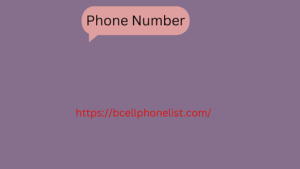## Demystifying the Dial Pad: A Guide to Phone Number Parts in the Digital Age (1998 Words)
In our hyper-connected world, phone numbers remain a fundamental element of communication. But beyond the familiar 10-digit sequence, lies a fascinating anatomy of parts, each playing a crucial role in directing calls to their intended destination. This comprehensive guide dissects the different parts of a phone number, explores their historical evolution, and explains their relevance in the digital age.
**A Breakdown of the Essentials: Unveiling the Building Blocks (350 Words)**
A typical phone number in the United States and south africa mobile number database many other countries consists of three distinct parts:
1. **Country Code (1-2 digits):** This prefix identifies the nation associated with the phone number. For instance, the code for the United States and Canada is “1.”
2. **Area Code (3 digits):** This segment historically served as a geographic identifier, routing calls to a specific region within a country. However, with the rise of mobile phones and overlays (assigning multiple area codes to a single area), the geographic correlation is becoming less precise.
3. **Local Phone Number (7 digits):** This unique combination identifies a specific phone line within the designated area code.
**A Historical Journey: From Rotary Phones to Mobile Revolutions (400 Words)**
The concept of segmented phone numbers emerged in the early 20th century to address the limitations of local, non-descriptive phone numbers. The introduction of area codes in the US with the North American Numbering Plan (NANP) in 1947 revolutionized phone routing.
Initially, area codes were assigned based on population density, with lower numbers concentrated in the East and higher numbers in the West. However, population shifts and the proliferation of mobile phones necessitated the implementation of overlays, making the geographic connection less straightforward.
**Beyond Borders: Exploring International Variations (400 Words)**
While the US system serves as a common reference SNBD Host point, phone number formats vary internationally:
* **International Calling Prefix:** The “+” symbol signifies an international call, followed by the country code.
* **Variable Lengths:** The number of digits in country codes and local phone numbers can differ depending on the nation.
Understanding these variations is crucial for making successful international calls. International calling services and online resources often provide detailed information on specific country phone number formats.
**The Digital Age and Phone Numbers: A Shift in Focus (400 Words)**
The digital revolution has impacted how we use phone numbers:
* **Two-Factor Authentication:** Phone numbers are often used for verification purposes in online transactions and account security.
* **Emergency Services:** Dialing emergency numbers like 911 (US) or 999 (UK) remains the most effective way to reach emergency responders.
**Beyond the Dial Pad: The Future of Phone Number Parts (400 Words)**
As technology continues to evolve, the future of phone number parts might take some interesting turns:
